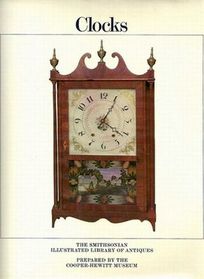Search -
Clocks
Clocks
Author:
The Smithsonian Illustrated Library of Antiques — Clocks, more than any other type of furniture, arouse a special affection. Words written long ago in a moving tribute to a tall clock by an unknown admirer are testament enough: "You are the voice of my home--may those who follow me listen too, and through the inward searchin... more »
Author:
The Smithsonian Illustrated Library of Antiques — Clocks, more than any other type of furniture, arouse a special affection. Words written long ago in a moving tribute to a tall clock by an unknown admirer are testament enough: "You are the voice of my home--may those who follow me listen too, and through the inward searchin... more »
ISBN-13: 9780910503297
ISBN-10: 091050329X
Publication Date: 6/1980
Pages: 128
Rating: ?
ISBN-10: 091050329X
Publication Date: 6/1980
Pages: 128
Rating: ?
0 stars, based on 0 rating
Publisher: Smithsonian Institution
Book Type: Hardcover
Members Wishing: 0
Reviews: Amazon | Write a Review
Book Type: Hardcover
Members Wishing: 0
Reviews: Amazon | Write a Review
Genres:




